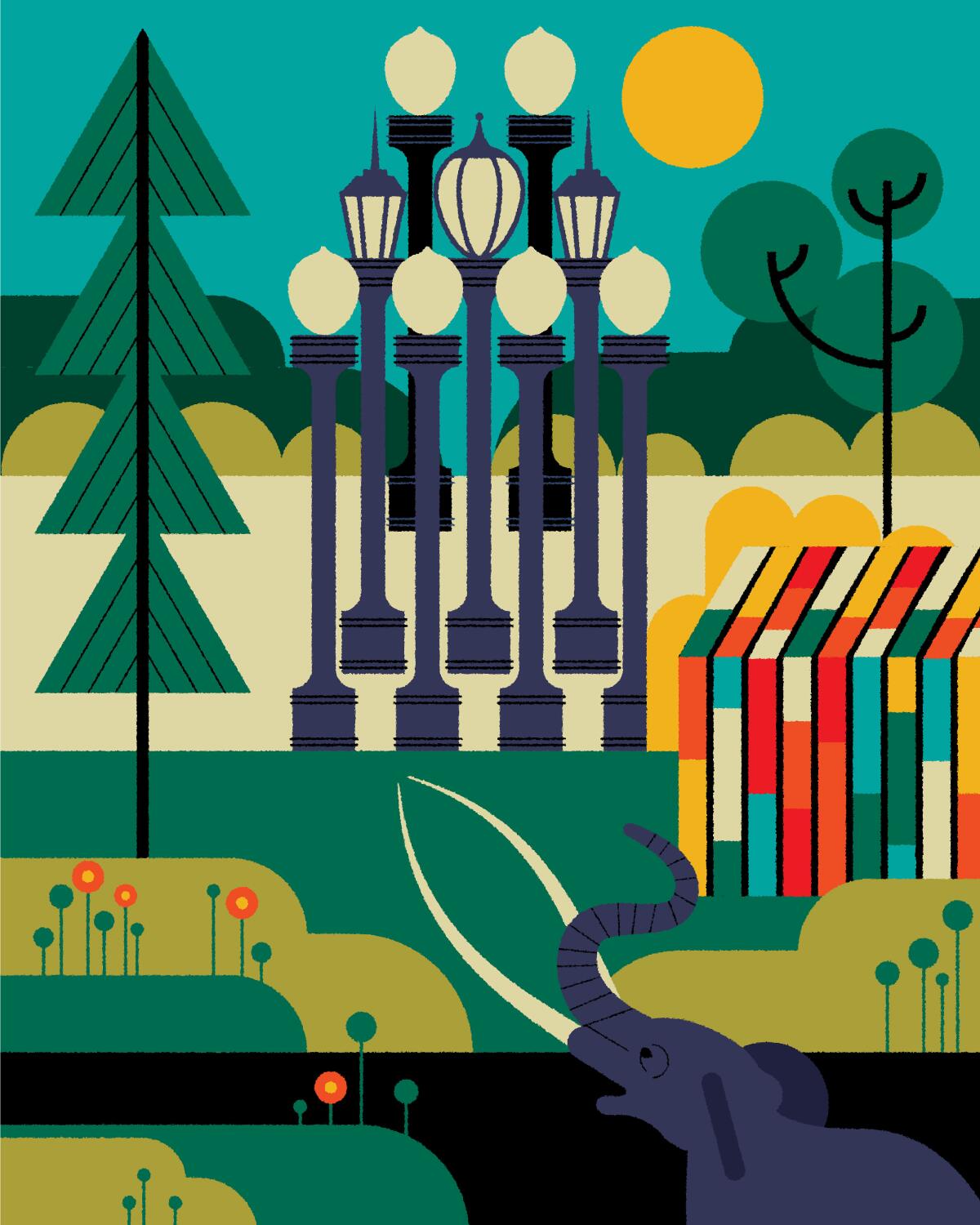
11 free museum days in L.A. that you’ll want to plan your whole month around
It doesn’t have to cost a ton of money to experience the best of L.A.’s cultural institutions. In fact, it doesn’t have to cost anything at all.
Depending on how you plan your visit, many of L.A.’s most popular museums can be experienced for free.
Planning your weekend?
Stay up to date on the best things to do, see and eat in L.A.
Several of them are always free: the Museum of Contemporary Art (MOCA), the Broad, the Getty Center and Villa, the African American Firefighter Museum and the Hammer Museum, though most require or recommend advanced reservations. And Los Angeles County residents with a public library card in good standing can access passes to more than a dozen cultural institutions for free or minimal cost.
And in addition to the annual free museum day observed on March 23, many of the city’s museums and botanic gardens offer regular free days throughout the month. Here are 11 to visit.
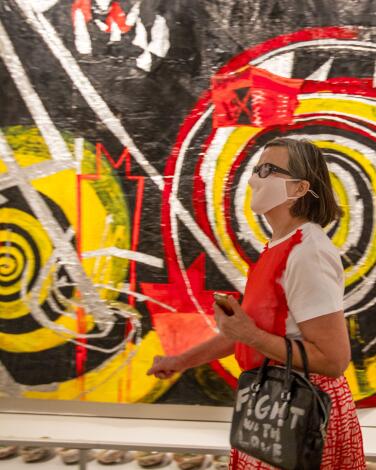
The Autry Museum of the American West
About the museum: Within Griffith Park, one specific location deserves to be highlighted: the Autry Museum of the American West, which turned 35 years old this year. Located inside the park across the street from the L.A. Zoo, the 36,000-square-foot complex appears to be smaller than it is, but it has three floors, with administrative offices on the top floor and multiple exhibitions that are technically underground. At the museum’s entrance is a bronze sculpture of the co-founder of the museum, Hollywood’s singing cowboy Gene Autry, who’s responsible for holiday anthems like “Here Comes Santa Claus” and “Rudolph the Red-Nosed Reindeer.”
The Autry is much more than a cowboy museum. The interactive art space has more than 600,000 pieces of art and cultural objects, and is the steward of the second-most significant Native American collection in the country. You’ll learn about true representations of the West, including the influence of Indigenous people, queer cowboys and even modern groups like the Compton Cowboys. At the long-term “Imagined Wests” exhibit, you can spin a wheel to write your own western, play a “Jeopardy” game to test your knowledge of western films or step in front of a green screen to set yourself in the middle of a fight scene. You can easily spend an hour or the entire day here, whether you’re solo or with your family — there are also several hangout and reflection areas inside the Autry. The museum also hosts events regularly on the property, including film screenings with Street Food Cinema.
The Autry is closed Mondays and costs $18 for adults, $14 for seniors and students, and $8 for 3- to 12-year-olds.
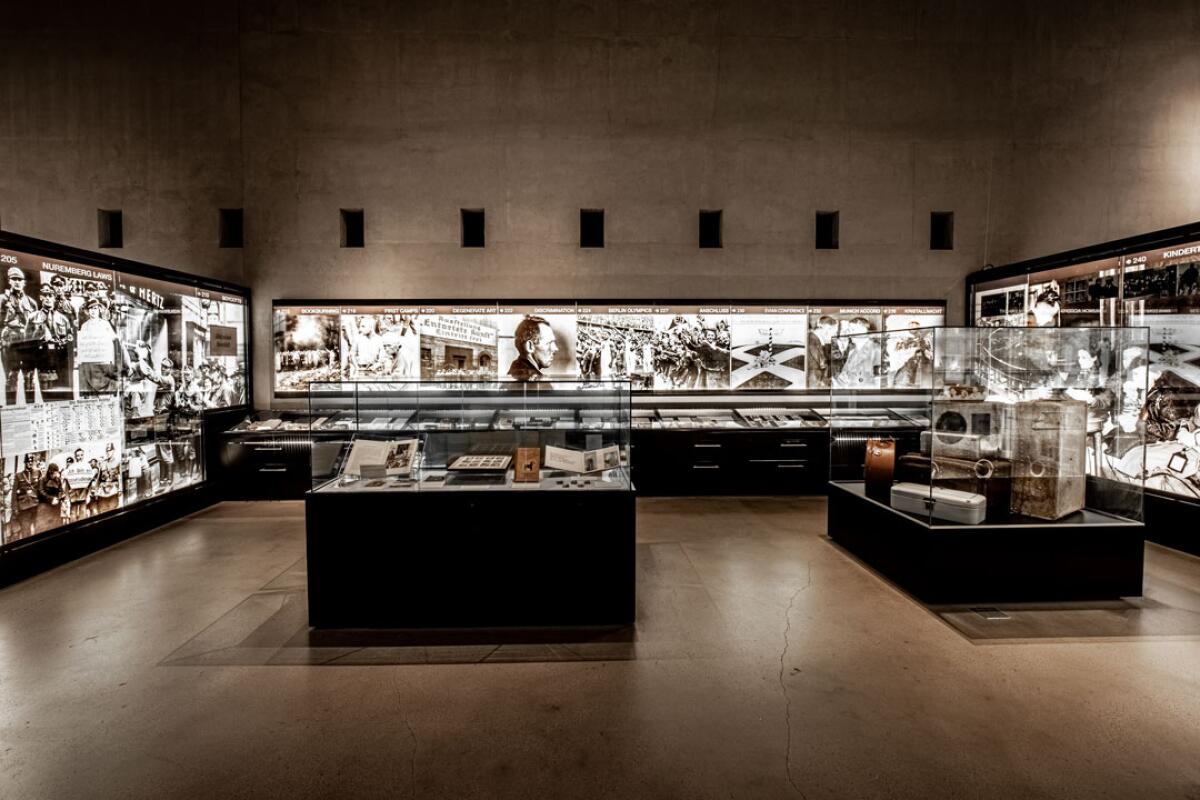
Holocaust Museum LA
About the museum: Located across the street from the Grove on the western border of Pan Pacific Park, Holocaust Museum LA (formerly known as the Los Angeles Museum of the Holocaust) is the oldest of its kind in the nation. Founded in 1961 by a group of Holocaust survivors, the museum focuses on the impact of the genocide with an aim toward commemorating survivors and those who perished.
Designed by architect Hagy Belzberg, the current 28,000-square-foot building is partially obscured underground and blends into the surrounding parkland. Plans to expand the museum — including the addition of a rooftop pavilion featuring a boxcar found outside the Nazis’ Majdanek concentration camp in Poland — will more than double the space to 50,000 square feet.
Admission to the museum is $15 for adults, $10 for seniors and members of the military. Students, teachers and children under 17 enter free with valid I.D.
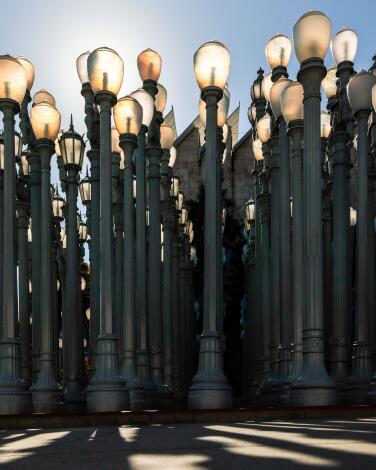
Los Angeles County Museum of Art (LACMA)
About the museum: When Angelenos hear the word LACMA, they might immediately think of Chris Burden’s iconic installation “Urban Light,” but there’s much more to the Los Angeles County Museum of Art than great selfie ops at dusk.
Inside the art museum, the largest in the western United States, you’ll find a permanent collection that includes paintings by Pablo Picasso, David Hockney’s stunning rendition of L.A.’s Mulholland Drive and Michael C. McMillen’s wonderfully eerie installation “Central Meridian (The Garage),” which makes you feel as though you’ve stumbled into a stranger’s untouched garage. And though Burden is best known for “Urban Light,” his kinetic sculpture “Metropolis II” commands its own room inside, where tens of thousands of tiny cars whir up and down freeways at 240 scale miles per hour.
There’s also a lovely plaza with a cafe and a bar, which is perfect for killing time and taking in the ambience on a beautiful day. From April to November, LACMA hosts free jazz concerts every Friday night, which draw jazz lovers of all ages for picnics and dancing. Since the museum is tucked within Hancock Park, it’s also adjacent to the Academy Museum and the La Brea Tar Pits. A modest amount of street parking can be found on 6th Street and Wilshire Boulevard, but there are parking garages in the surrounding area.
LACMA is closed on Wednesdays and costs $25 for adults, $21 for seniors and students, $10 for kids and teens 3 to 17 years old. Children under 2 enter for free.
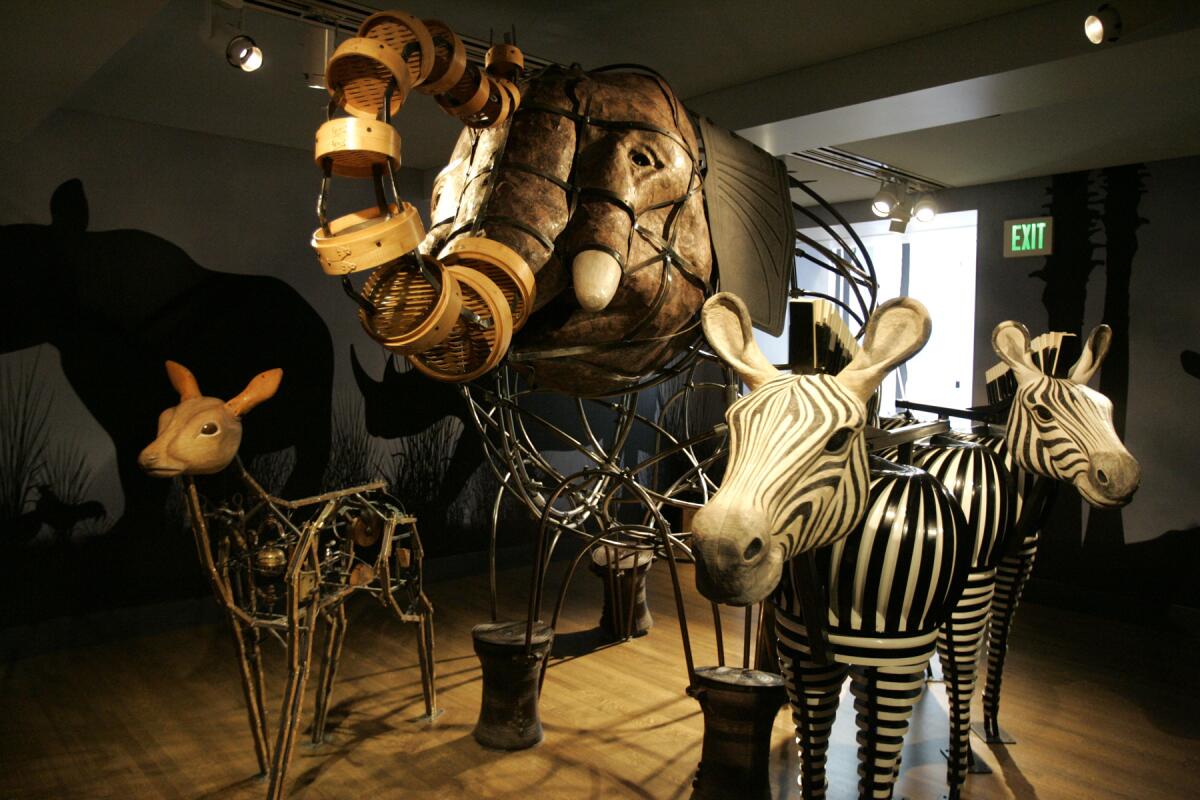
Skirball Cultural Center
About the museum: Just a stone’s throw from the Getty Center lies the Skirball Cultural Center, one of the nation’s largest Jewish cultural institutions.
Designed by architect Moshe Safdie, the beautiful edifice of pale stone, stainless steel and glass houses one of the world’s largest collections of Jewish ceremonial art, ritual objects and material culture including nearly 25,000 pieces, both ancient and contemporary.
The permanent collection features the family-friendly Noah’s Ark play area, an 8,000-square-foot wooden ark filled with hundreds of handcrafted animals made from recycled materials and upcycled objects like baseball mitts, mop heads and rearview mirrors.
During its inception in 1995, former President and Chief Executive Rabbi Uri D. Herscher set out to focus on the 4,000 years of Jewish history that preceded the Holocaust, rather than compete with West L.A.’s Museum of Tolerance and Mid-Wilshire’s Holocaust Museum.
“I really wanted to tell a story that was not mournful,” Herscher said at the time. “We are a community of memory and all too often place the emphasis on the mournful, not the joyful. There were 18 Herschers, at least, who perished in the Holocaust and I think the best tribute to those who were sacrificed during that black period in history — and I’m not just talking about the 6 million Jews, I’m referring to 30 million people — the best memorial to them is to repair a little corner of the world.”
Admission is $18 for adults, $13 for seniors, students and children 2 to 17 years old. Members and children under 2 enter free.
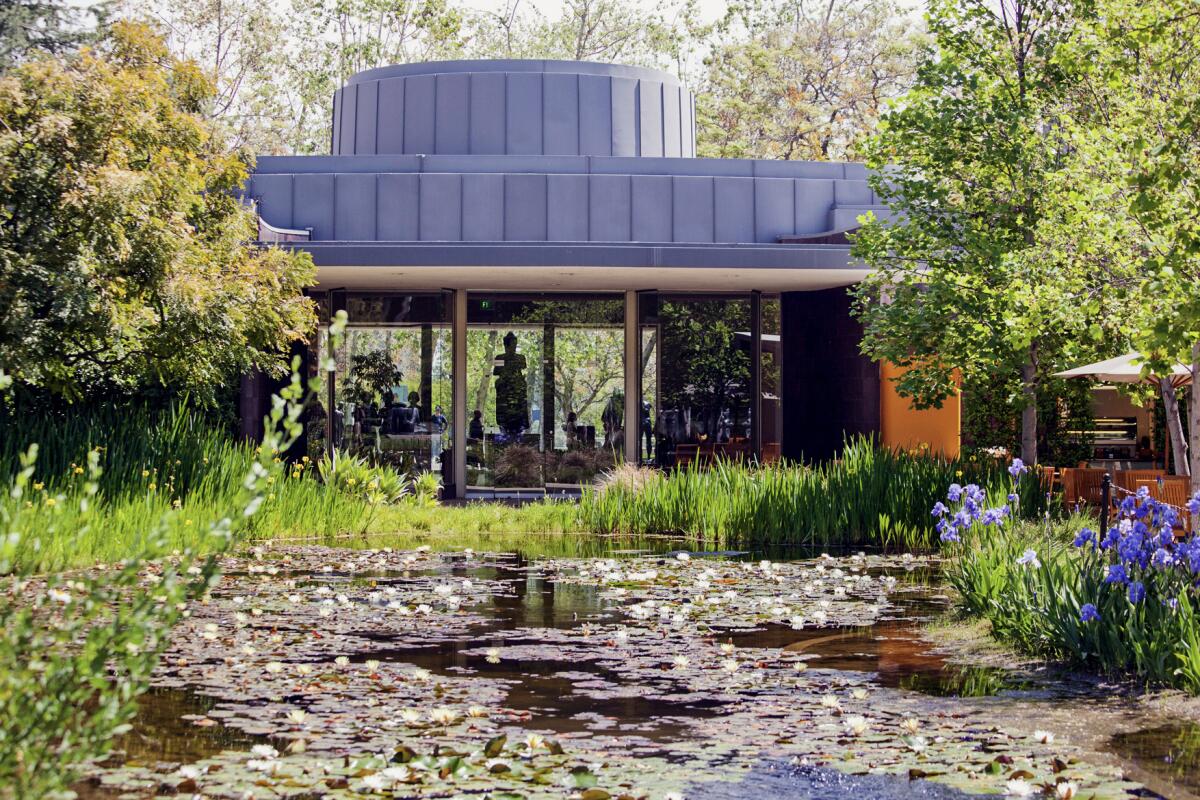
Norton Simon Museum
About the museum: Even if you’ve never set foot in Pasadena, odds are good that you’ve seen this museum’s brown-tiled exterior. That’s because it stands at the corner of Colorado and Orange Grove boulevards, the prime turn (and TV camera location) along the route of the Rose Parade.
For a small museum, the Norton Simon packs in a lot of great art. The European and Asian collections get most of the attention — especially the French Impressionists — but don’t overlook Diego Rivera’s “The Flower Vendor,” a 1941 oil painting of a girl with her arms around a big bunch of lilies. (Actor Cary Grant gave it to the museum in 1980.)
Through April 22, you can see Paul Gauguin’s evocative “The Swineherd,” on loan from LACMA across town. Meanwhile in the sculpture garden, the lilies are real. The plantings and reflecting pool were designed to echo France’s Giverny gardens (which inspired Claude Monet).
The museum is closed Tuesdays and Wednesdays and costs $20 for adults and $15 for seniors. Members, students and kids under 18 enter free.
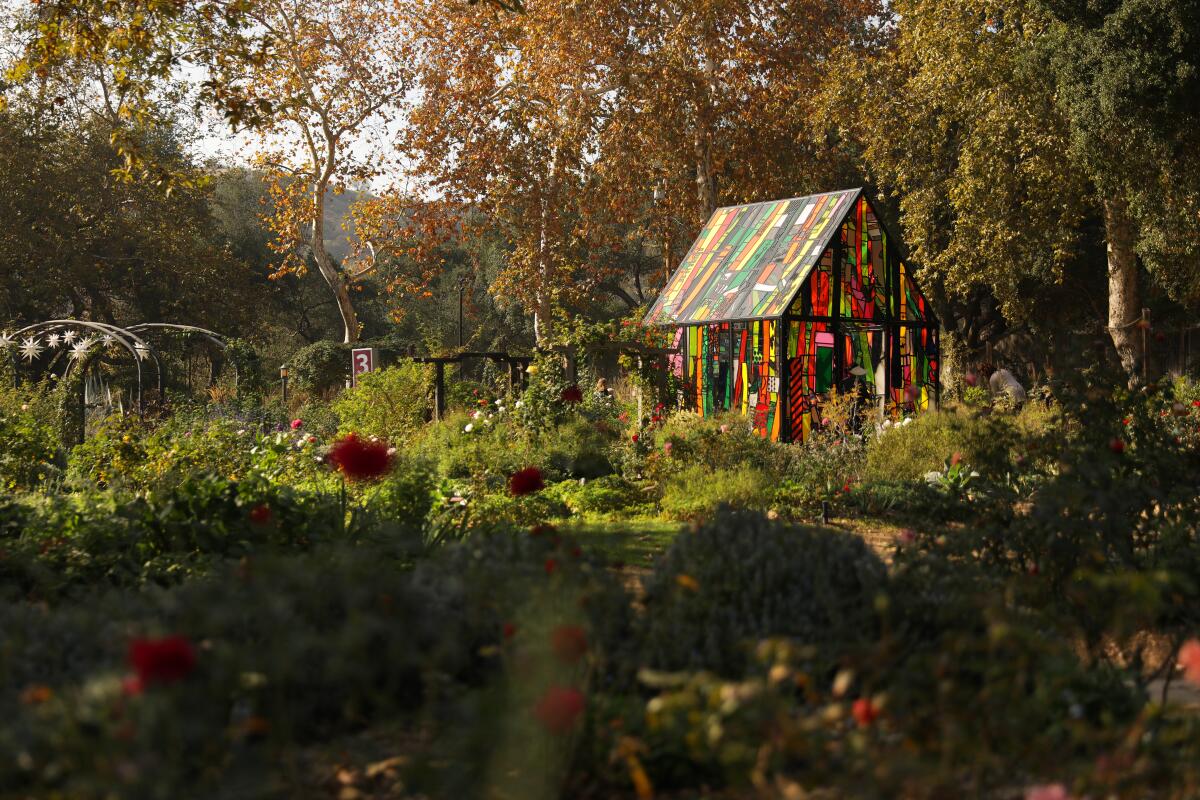
Descanso Gardens
About the museum: Think of Descanso Gardens as part chameleon, part sanctuary. Walking through its towering oak woodlands and ancient forest is kind of a religious experience — silent, awe-inspiring and very intimate. But then there are the flower gardens, starting with 5 acres of roses — more than 1,600 varieties — and a Japanese Garden with a teahouse and delicate blooms from cherry and plum trees and other plantings native to Asia. There are also the California Garden, designed by native plant advocate Theodore Payne, masses of blooming tulips in the spring and one of the country’s largest collections of camellias, blooming best in January and February, when most flowers are resting.
Descanso’s Sturt Haaga Gallery has rotating exhibits throughout the year, and the gardens often host original compositions and performances, sometimes with music piped through the trees. The garden, which is owned by L.A. County, also hosts popular seasonal events such as the Halloween-season Carved, featuring hundreds of pumpkins intricately carved by artists, and the annual holiday light show Enchanted. Visit often to check out the changing gardens because there’s always something blooming at Descanso. This is a garden you can visit according to your mood. Whether you’re feeling reflective or joyous, it will always be uplifting.
Admission is $15 for adults, $11 for seniors and students with ID, and $5 for children ages 5-12. Members and children under 5 enter free. Annual memberships start at $70 for individuals and $99 for families.
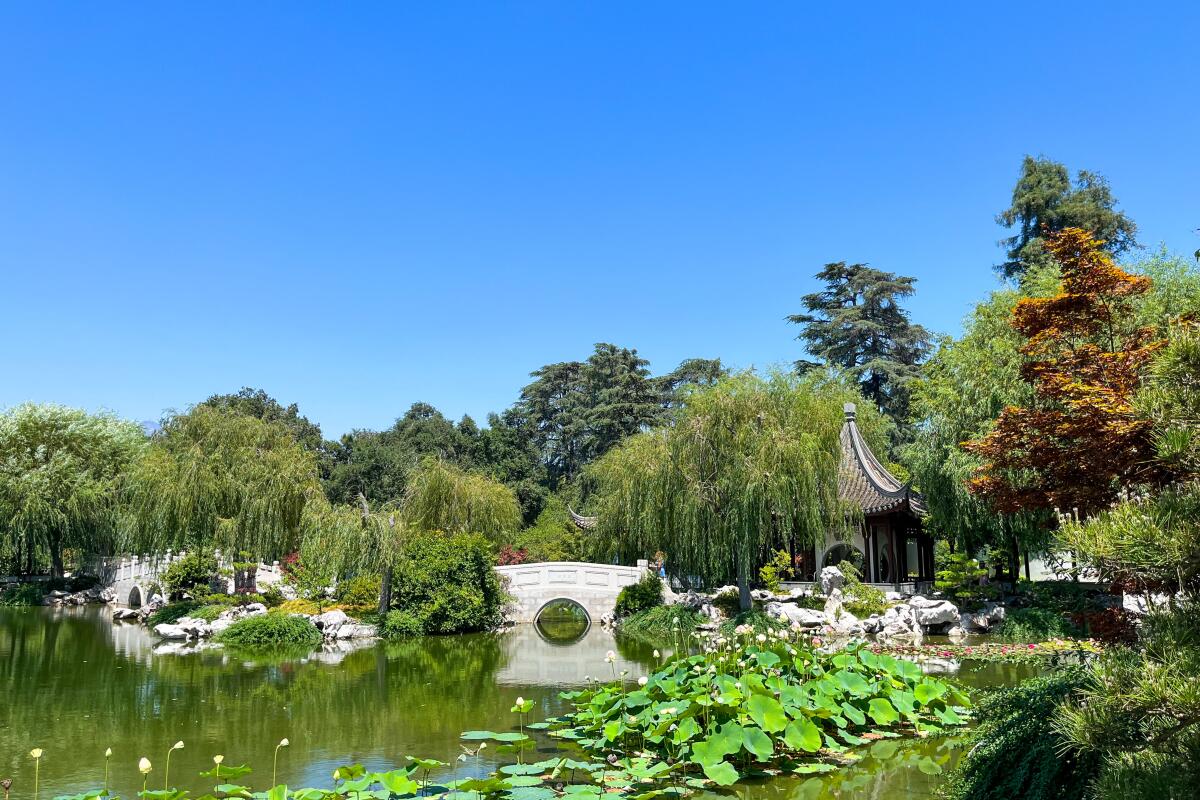
Huntington Library, Art Museum, and Botanical Gardens
About the museum: At less than $30 per person, the beloved Huntington Library, Art Museum, and Botanical Gardens may just be the best bang for your buck due to the number of installations. The place spans more than 200 acres — 130 of which are open to the public — and you and your crush can roam through the breathtaking botanical gardens and snap a photo near the 100-year-old Japanese Garden, stop by the main library, which houses more than 11 million items the 11th to the 21st centuries, and take in the stunning artwork inside one of the many art galleries. You can also book a free walking tour during certain hours. There are plenty of spots to take a seat and get lost in conversation. Advance reservations are required on weekends and holidays. You don’t have to make a reservation during the week, although it’s highly encouraged for a quicker check-in.
Pro tip: It can get toasty in the summer, so be sure to layer on the sunscreen and pack your own refillable water bottle to stay hydrated. But no worries if you forget; there are cafes at the Huntington that sell everything from drinks to gelato to help you cool down.
The Huntington is closed Tuesdays and costs $25 for adults, $21 for students, seniors and members of the military and $13 for 4- to 11-year-olds during the week. Reservations are required Friday-Sunday, on holidays and during peak seasons.
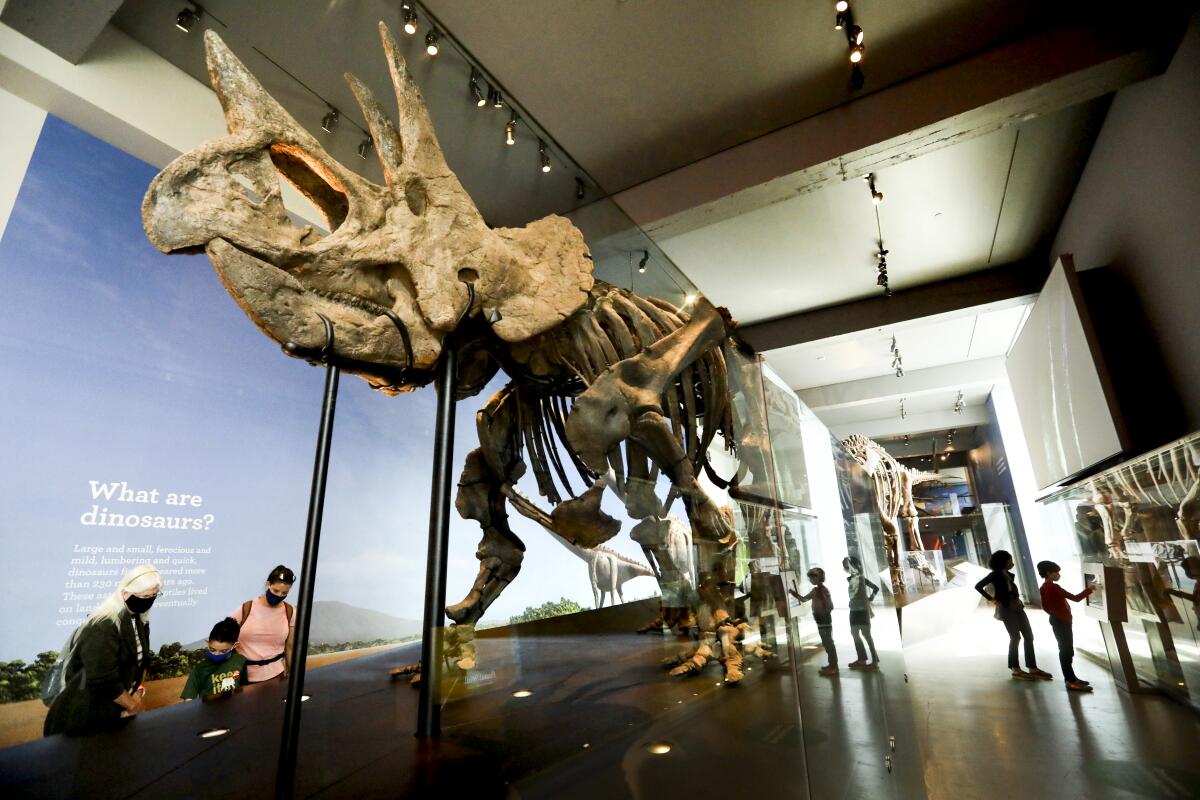
Natural History Museum of Los Angeles County
About the museum: Trying to inspire wonder, discovery and responsibility in natural and cultural worlds has been the mission for the National History Museum of Los Angeles County since 1913. The museum sees people, as well as the elements surrounding them in the world, as all connected. This philosophy is reflected in its practices at the museum, which offers insightful educational opportunities and promotes curiosity and understanding.
The museum safeguards more than 35 million specimens and artifacts and offers three floors of permanent exhibits. One of its signature exhibits are the dueling dinosaurs at its Grand Foyer entrance. Two complete skeletons of a Tyrannosaurus rex and a Triceratops are locked in battle there.
Also on offer are rare fossils, grand dioramas of African and American mammals, marine animals, Pre-Columbian culture, and historical artifacts from California. The museum also houses the largest collection of gold in the U.S. and plenty of kid-friendly activities.
The museum is closed on the first Tuesday of the month and costs $18 for adults, $14 for students and seniors and $7 for kids ages 3 to 12. Children under 2 enter free.
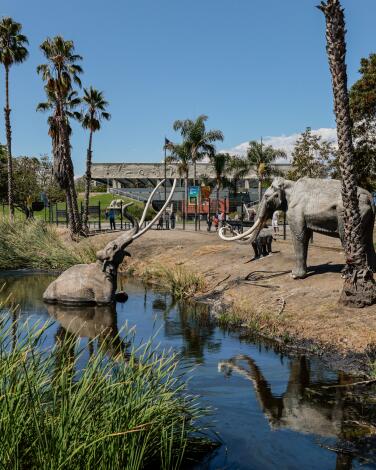
La Brea Tar Pits
About the museum: If you grew up around Los Angeles, you’ve probably been to the La Brea Tar Pits on countless field trips, and if you grew up elsewhere, you’re probably wondering why people are so interested in these oozing pits in the middle of the city. The main draw is what’s inside the tar: perfectly preserved Ice Age animals, plants and insects from the last 50,000 years.
That makes these pits an enduring scientific wonder. “The type of science that you can do at La Brea Tar Pits is stuff that you can’t really do at any other paleontological site in the world, just because we have so many fossils, and they’re so well preserved,” Emily Lindsey, associate curator and excavation site director, told The Times. Though dinosaur fossils have not been found in the pits, there have been excavations of the remains of mammoths, saber-toothed cats, rabbits and even one raccoon.
In front of the museum, check out the still-bubbling Lake Pit, where you’ll see an installation that depicts a baby mammoth watching one of its parents drown in the tar. Then, once you’re thoroughly bummed out, take a break from the tar on the lush premises — there’s plenty of grass and space for picnics and general frolicking.
Admission is $15 for adults, $12 for students and seniors, and $7 for 3- to 12-year-olds. Children under 2 are admitted for free but require a separate ticket.
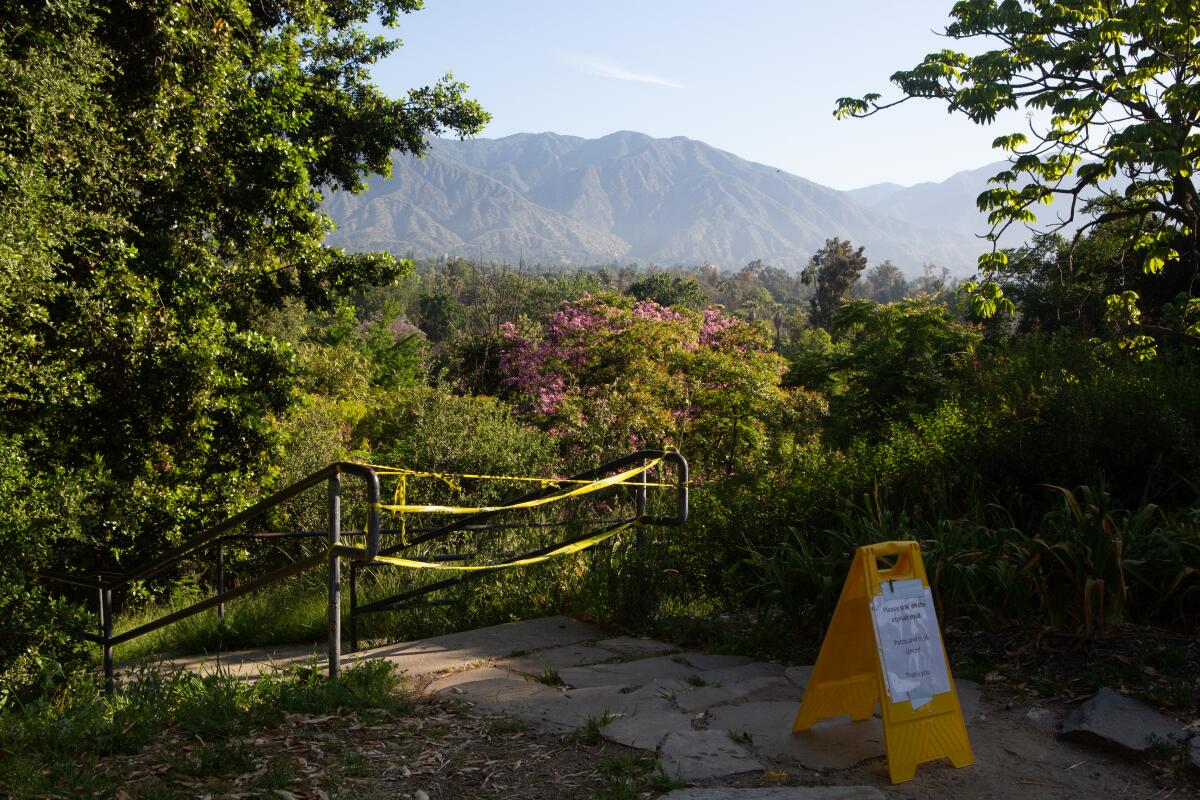
Los Angeles County Arboretum & Botanic Garden
About the museum: Maybe it’s the Los Angeles County Arboretum & Botanic Garden’s early history as an Indigenous Tongva settlement named Aleupkigna on Baldwin Lake and then as the Mexican land grant Rancho Santa Anita, where cattle, grains, vineyards and fruit trees were nurtured, that gives this sprawling 127-acre botanic garden a kind of proletariat feel.
There are plenty of beautiful places to wander here, such as the aquatic gardens that include the Meyberg Waterfall, the Meadowbrook Garden (filled with deciduous trees whose colorful blooms and leaves change every season as well as evergreens), the tropical greenhouse with thousands of orchids, and the plantings grouped by geography — South American, Mediterranean, South African, Australian and Asiatic-North American. But the arboretum also has extraordinary demonstration gardens such as the Crescent Farm, a one-time compacted lawn transformed into a lush, drought-resistant garden of California native plants and low-water fruits, vegetables, ground covers and shrubs by using lasagna mulching and hugelkultur beds to rebuild the soil.
Peacocks nonchalantly roam the gardens — they’re descendants of the three birds imported by Rancho Santa Anita’s last owner, Elias Jackson “Lucky” Baldwin. There are historic buildings as well, such as the relocated Santa Anita Depot and the Queen Anne Cottage built by Baldwin.
Little-known fact: This L.A. County-owned garden is also a great place for botanic research, thanks to its extensive library that you can search online and to Frank McDonough, a full-time botanical information consultant whose job is to answer the public’s questions about plants. (Call McDonough at [626] 821-3236.) The garden has regular wellness classes such as forest bathing and yoga. It also provides room for many plant-related conventions and clubs and offers a popular wintertime holiday light show called Lightscape. It’s truly a garden for the masses, especially if they have a taste for wonder.
Admission is $15 for adults, $11 for seniors and students, $5 for kids ages 5-12. Members and children 4 and younger are free. Annual memberships are $70 for individuals, $65 for two seniors (age 62+) and $95 for families.
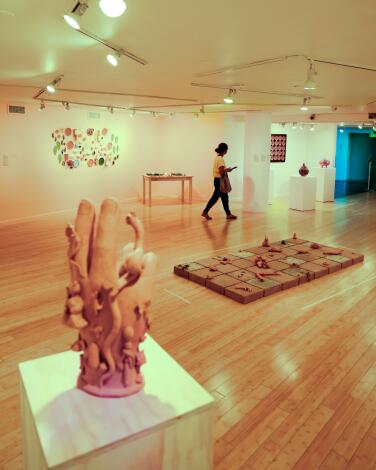
Craft Contemporary
About the museum: Across the street from the La Brea Tar Pits is Craft Contemporary, a narrow building that’s striped and accented with black, gray, white and yellow. On my first visit, an exhibit by Dominican American artist Uzumaki Cepeda, “Daydreaming,” was on display, with all of the museum’s surfaces and added furniture covered in colorful faux fur, including the walls, floors, cabinets, vases and chairs. The intention was to create a soft and inclusive space for BIPOC to rest in while escaping the harsher public.
On another visit, I encountered “Black — Still,” a multisensory exhibit on the ground floor that uses the tar that bubbles underneath the neighborhood, and “Wayfinding,” a ceramics exhibit that explores themes of climate disaster, personal identity and migration through clay pieces. Regardless of what’s up when you visit, you can count on Craft Contemporary to offer a modern perspective on craft art, usually featuring local artists.
The museum is closed Mondays and costs $9 for adults and $7 for students and seniors.
Sign up for The Wild
We’ll help you find the best places to hike, bike and run, as well as the perfect silent spots for meditation and yoga.
You may occasionally receive promotional content from the Los Angeles Times.



